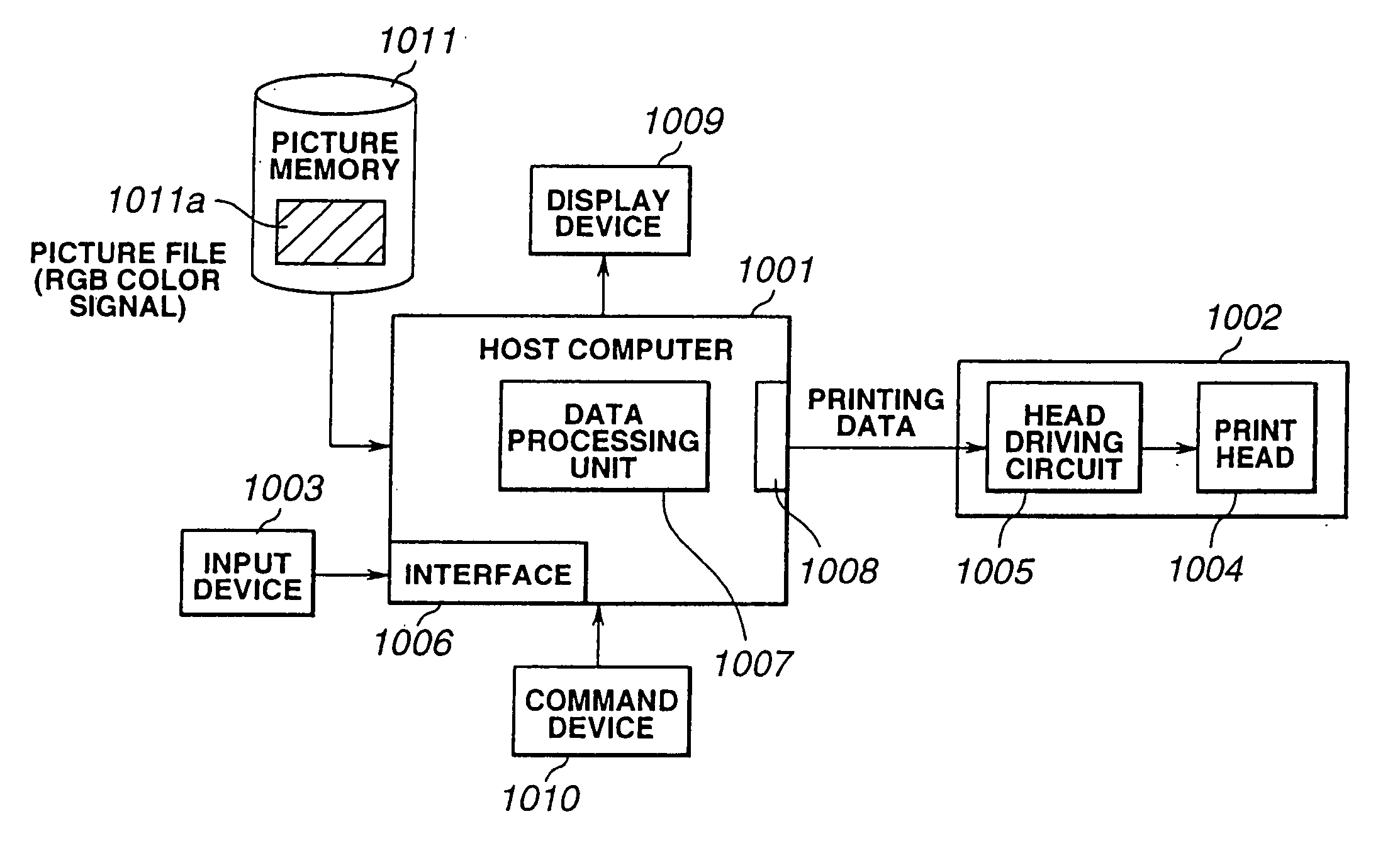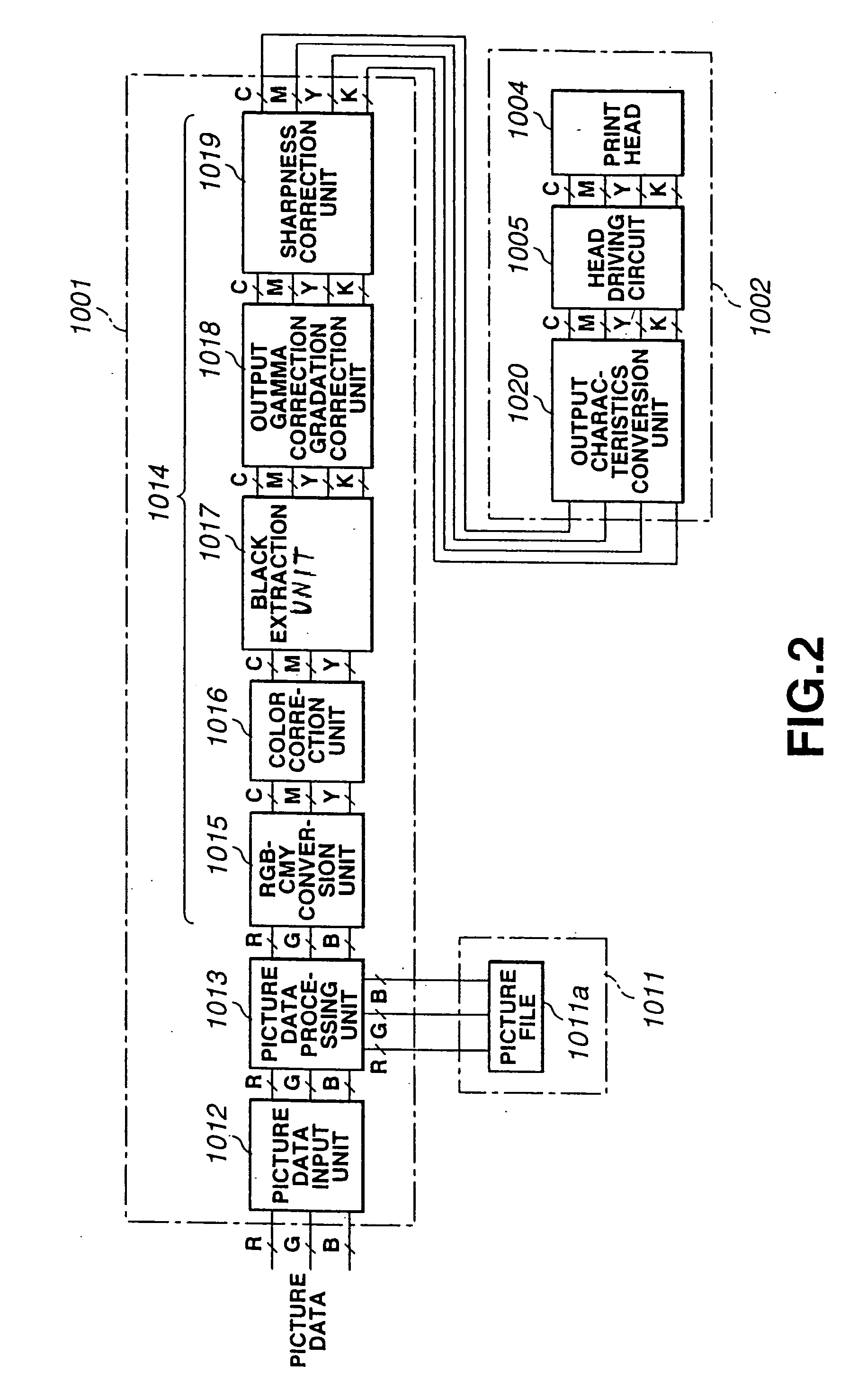The above-described first and second printing methods suffer from a number of drawbacks.
The computer also needs to be equipped with disc drivers tailored to the
peripheral equipment; these drivers are assembled into the computer by a laborious operation.
Hence, the user has to run plural
application software programs and to transfer picture data therebetween, involving still more labor.
Further, if a
desk-top or
tower type computer is used, a wide installment space is required for connecting the computer to the
peripheral devices, another inconvenience.
Another limitation of the first printing method, as well as with the second printing method, is the resulting difference in the picture quality of the pictures printed by the printer and those displayed on the
input device display and / or
computer monitor.
However, these measures are not fully satisfactory in that differences in color tone and contrast persist.
Hence, at any given time, the CPU is executing only one operation, which is not conducive to high speed
processing.
The result is that, when executing the target
processing, the larger the picture data size, the longer the time needed to complete the
processing.
As such, the more complex the processing contents are, the longer the time required for processing.
Since additional time is consumed until the processing for a sole parameter value comes to a close, it becomes difficult for an operator to compare the processing results for the respective parameters.
This renders it difficult to set an optimum parameter value.
This is a problem for both the first and second printing methods.
The operation methodology for this is complex, and therefore the desired processing cannot be easily performed.
In the
application software, which has universal input / output functions in order to operate with common picture input devices and a majority of printer types, and which has the
universal function for handling pictures at large without specifying the picture data to be handled, the method of using the
application software, contents of the functions or the operating methods are difficult to comprehend, rendering it difficult for laypersons to use.
As a result, if the object is displayed on a monitor or printed on a printer, an undesirable tilted image is produced.
Although it may be possible for application
software to be added to correct the tilted image, the aforementioned difficulties are present if application
software is used.
Therefore, with the common user not well trained in the method of operating the application
software, only a tilted displayed image or a tilted print can be obtained.
Thus, if the imaged picture is directly printed, the face of the person is placed at the center of the print, and the upper part of the print becomes unnecessary surrounding space.
This means that it is difficult to realize a printed picture with well-balanced composition.
In the above-described second printing method, the possible processing operations such as picture inputting, editing, picture-changing / selecting, synthesis, correction or printing depend on the function of the input device, but the processing abilities of the input device are typically limited.
Moreover, the possible processing differs from one input device to another, such that the operating sequence is modified from
device to device, making it non-
user friendly.
Further, the input device and the printer are interconnected in a one-to-one correspondence with
current technology, whereby it is impossible to process and print picture data from plural input devices.
In the second printing method, since the possible processing operations such as picture inputting, editing, working, synthesis, correction or printing depend on the function of the input device, there are occasions wherein the user cannot perform the desired processing.
It is also difficult to add new processing functions or to add a new function to a set of existing processing functions.
Also, with this method, it is difficult to perform the processing for arranging the picture contents in a satisfactory condition.
Moreover, as in the first printing method, the input device generally does not have a picture tilt-correction function.
Thus, in either of the above-described methods, it is difficult for the user to correct the offset or the tilt of the picture contents in each picture, rendering it difficult to realize a printed picture with a satisfactory orientation of the main portion of the picture.
 Login to View More
Login to View More  Login to View More
Login to View More 


